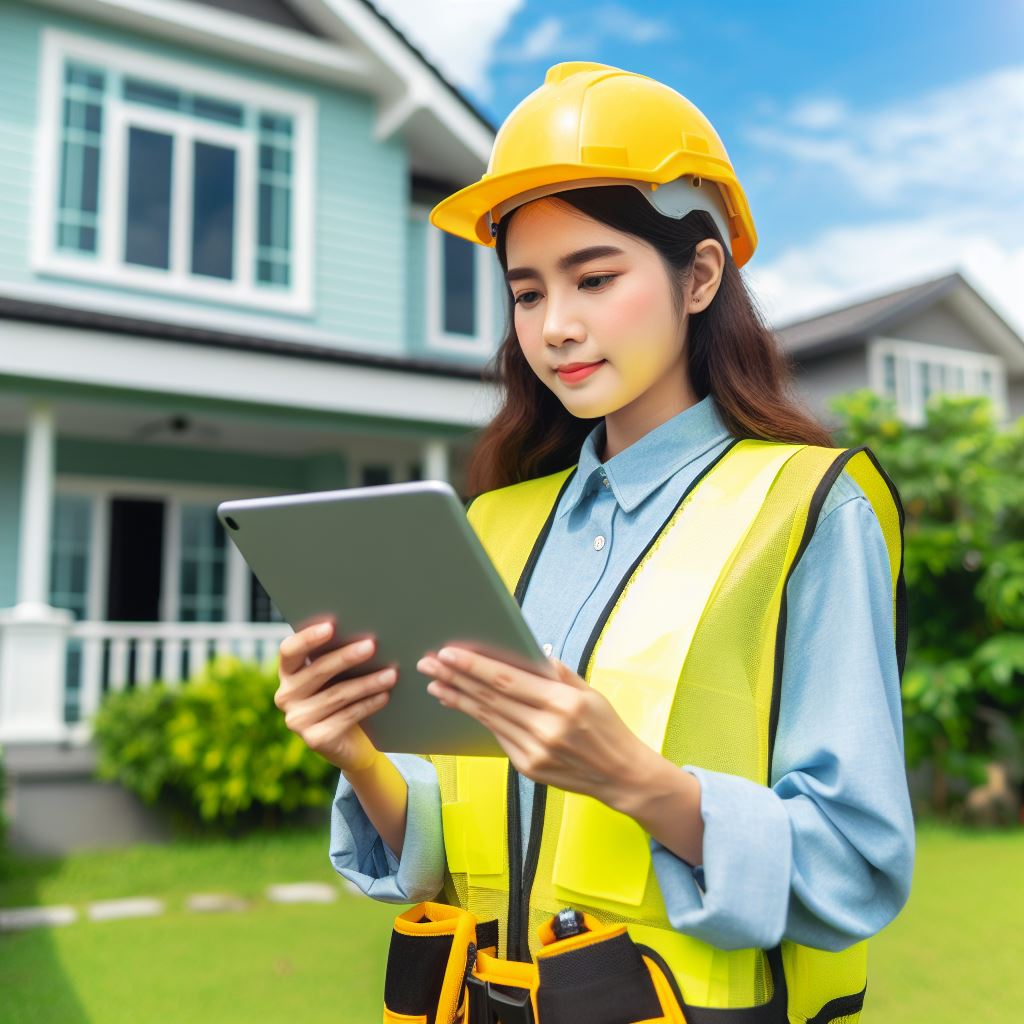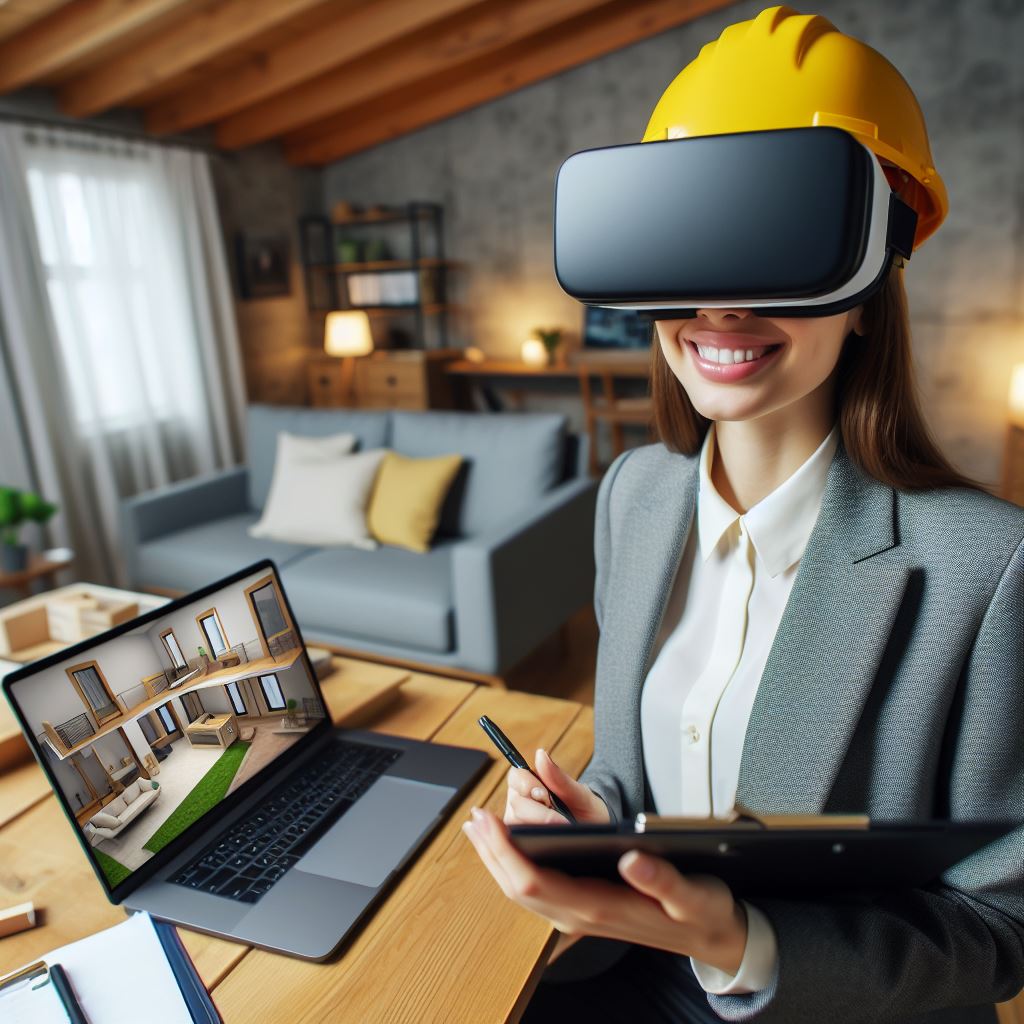The Benefits of Home Inspection Technology Automation
In recent years, the field of home inspection has seen a significant transformation with the advent of technology automation. This advancement has revolutionized the way inspections are conducted, providing numerous benefits to both inspectors and homeowners. By automating various aspects of the inspection process, such as data collection, analysis, and reporting, home inspection technology automation has streamlined operations, improved accuracy, and enhanced overall efficiency.

One of the key advantages of home inspection technology automation is the ability to collect and analyze data more efficiently. Traditionally, inspectors would manually record information about a property, often relying on pen and paper. This method was not only time-consuming but also prone to errors. With automation, inspectors can now use digital tools to capture data in real-time, eliminating the need for manual transcription and reducing the risk of mistakes. This not only saves time but also ensures that the information collected is accurate and reliable.
Furthermore, home inspection technology automation enables inspectors to analyze data more effectively. Advanced software and algorithms can process large amounts of data quickly, identifying patterns and anomalies that may not be immediately apparent to the human eye. This allows inspectors to make more informed decisions and provide homeowners with more comprehensive and accurate reports. By leveraging automation, inspectors can also access historical data and compare it with current findings, enabling them to identify trends and potential issues that may require attention.
Another significant benefit of home inspection technology automation is the improved efficiency it brings to the inspection process. Automation eliminates the need for repetitive and time-consuming tasks, allowing inspectors to focus on more critical aspects of their work. For example, automated tools can generate checklists and templates, making it easier for inspectors to conduct inspections systematically and consistently. This not only saves time but also ensures that no crucial steps are missed during the inspection. Additionally, automation can facilitate the scheduling and coordination of inspections, reducing administrative burdens and improving overall workflow.
Moreover, home inspection technology automation enhances the overall customer experience. With automated tools, inspectors can provide homeowners with more detailed and visually appealing reports. These reports can include photographs, videos, and interactive elements, making it easier for homeowners to understand the findings and recommendations. Automation also enables inspectors to deliver reports more quickly, reducing the waiting time for homeowners and allowing them to take prompt action if necessary. By providing a more efficient and user-friendly experience, home inspection technology automation helps build trust and satisfaction among homeowners.
In conclusion, home inspection technology automation offers numerous benefits to both inspectors and homeowners. By automating data collection, analysis, and reporting, automation improves efficiency, accuracy, and overall workflow. Inspectors can collect and analyze data more efficiently, enabling them to make more informed decisions and provide homeowners with more comprehensive reports. Automation also streamlines the inspection process, eliminating repetitive tasks and improving overall efficiency. Furthermore, automation enhances the customer experience by providing visually appealing reports and reducing waiting times. As technology continues to advance, home inspection automation is likely to become an indispensable tool in the field, further improving the quality and effectiveness of inspections.
How Home Inspection Technology Automation is Revolutionizing the Industry
In recent years, the home inspection industry has witnessed a significant transformation due to the advent of technology automation. This revolution has brought about numerous benefits, including increased efficiency, accuracy, and cost-effectiveness. By leveraging advanced tools and software, home inspectors can now conduct inspections more effectively, saving time and resources. This article explores the impact of home inspection technology automation on the industry and its implications for both inspectors and homeowners.
One of the most notable advancements in home inspection technology is the use of automated inspection tools. These tools, such as drones and robots, have revolutionized the way inspections are conducted. Drones equipped with high-resolution cameras can capture detailed images of roofs, chimneys, and other hard-to-reach areas, eliminating the need for inspectors to physically climb ladders or access dangerous locations. Similarly, robots can navigate crawl spaces and attics, providing inspectors with real-time video footage and reducing the risk of accidents. These automated tools not only enhance safety but also enable inspectors to access areas that were previously inaccessible, ensuring a more comprehensive inspection.
Furthermore, the integration of artificial intelligence (AI) and machine learning algorithms has significantly improved the accuracy and efficiency of home inspections. AI-powered software can analyze vast amounts of data and identify potential issues that may go unnoticed by human inspectors. For instance, thermal imaging cameras combined with AI algorithms can detect hidden moisture or insulation problems, allowing inspectors to address these issues before they escalate. Additionally, machine learning algorithms can learn from past inspections, enabling them to provide more accurate predictions and recommendations for future inspections. This not only saves time but also enhances the overall quality of the inspection process.
Another key aspect of home inspection technology automation is the use of cloud-based software platforms. These platforms allow inspectors to streamline their workflow by digitizing inspection reports, storing them securely in the cloud, and easily sharing them with clients. This eliminates the need for paper-based reports, reducing administrative tasks and improving accessibility. Moreover, cloud-based platforms often include features such as scheduling tools, client management systems, and automated reminders, further enhancing efficiency and organization. Inspectors can now manage their entire inspection process from a single platform, saving time and resources.
The impact of home inspection technology automation extends beyond the inspection process itself. It also benefits homeowners by providing them with more comprehensive and transparent reports. With the use of advanced tools and software, inspectors can capture detailed images, videos, and measurements, which can be included in the inspection reports. This visual documentation helps homeowners better understand the condition of their property and make informed decisions. Additionally, the integration of AI algorithms enables inspectors to provide personalized recommendations for maintenance and repairs, ensuring that homeowners can address potential issues promptly.
In conclusion, home inspection technology automation has revolutionized the industry by increasing efficiency, accuracy, and cost-effectiveness. Automated inspection tools, such as drones and robots, have made inspections safer and more comprehensive. The integration of AI and machine learning algorithms has improved the accuracy of inspections and provided valuable insights for future inspections. Cloud-based software platforms have streamlined the workflow for inspectors, reducing administrative tasks and improving accessibility. Ultimately, homeowners benefit from more comprehensive reports and personalized recommendations. As technology continues to advance, the home inspection industry will undoubtedly witness further transformations, enhancing the overall quality of inspections and ensuring the safety and satisfaction of homeowners.
Exploring the Latest Trends in Home Inspection Technology Automation
In recent years, the field of home inspection has seen a significant transformation with the advent of automation technology. This technology has revolutionized the way inspections are conducted, making the process more efficient and accurate. In this article, we will explore some of the latest trends in home inspection technology automation and discuss their implications for the industry.

One of the most notable trends in home inspection technology automation is the use of drones. Drones equipped with high-resolution cameras can capture detailed images of a property from various angles, providing inspectors with a comprehensive view of the entire structure. This eliminates the need for inspectors to physically climb ladders or access hard-to-reach areas, reducing the risk of accidents and injuries. Additionally, drones can quickly cover large areas, allowing inspectors to complete inspections in a fraction of the time it would take using traditional methods.
Another trend in home inspection technology automation is the use of artificial intelligence (AI) and machine learning algorithms. These technologies can analyze vast amounts of data and identify potential issues or anomalies that may not be immediately apparent to human inspectors. For example, AI algorithms can detect patterns in electrical systems that may indicate a potential fire hazard or identify signs of water damage that may be hidden behind walls. By leveraging AI and machine learning, home inspectors can provide more accurate and comprehensive reports to their clients.
Furthermore, the integration of smart home technology has also had a significant impact on home inspection automation. Smart home devices, such as thermostats, security systems, and appliances, can now be connected to a central hub, allowing inspectors to remotely monitor and control these devices during inspections. This not only provides inspectors with real-time data on the performance of these systems but also enables them to identify any potential issues or malfunctions. Additionally, smart home technology can be used to automate routine tasks, such as turning on lights or adjusting the temperature, making inspections more efficient.
In addition to drones, AI, and smart home technology, the use of virtual reality (VR) and augmented reality (AR) has also gained traction in the home inspection industry. VR and AR technologies allow inspectors to create immersive and interactive experiences for their clients. For example, using VR, inspectors can create virtual walkthroughs of a property, allowing clients to explore every room and corner as if they were physically present. AR, on the other hand, can overlay digital information onto the physical environment, providing real-time data and annotations during inspections. These technologies not only enhance the inspection process but also improve communication between inspectors and clients.
While home inspection technology automation has undoubtedly brought numerous benefits to the industry, it is important to acknowledge some of the challenges that come with its implementation. For instance, there may be concerns regarding privacy and data security, as the use of drones and smart home devices involves the collection and storage of sensitive information. Additionally, there may be a learning curve for inspectors who are not familiar with these technologies, requiring additional training and resources.
In conclusion, home inspection technology automation has transformed the industry, enabling inspectors to conduct more efficient and accurate inspections. The use of drones, AI, smart home technology, and VR/AR has revolutionized the way inspections are conducted, providing inspectors with new tools and capabilities. While there are challenges to overcome, the benefits of automation technology in home inspections are undeniable, and it is likely that we will continue to see further advancements in the field in the years to come.
